It was time to take the foot off the gas after our busy schedule in Indonesia and stay a bit longer in one place and enjoy city life. That also meant that we had to get rid of one of the countries in our slightly overambitious plan for our seven month trip and unfortunately that was China. No holding pandas for me :), but there is always a next time…
Vietnam weather is different in every part of the country and especially in October it is difficult to see the whole country in decent weather (like most of South-east Asia in October). We therefore decided to limit our stay to Ho Chi Minh City (HCMC), the former Saigon, in the south. In the north we stayed around the capital Hanoi and close-by the beauty, Halong Bay.
Some interesting facts about Vietnam
- Vietnam is the largest exporter of cashews in the world, and the second largest exporter of rice.
- Although Vietnam is a developing country, it has a literacy rate of 94%.
- Ruou ran (snake wine), a Vietnamese specialty of rice wine with a pickled snake inside, allegedly can cure any sickness
- The Vietnamese language has six different tones. A change in tone changes the meaning of the word. This makes their language somewhat difficult to learn.
- When a new store opens the other shop-owners in the area send massive flower bouquets to the shop to wish them luck.
Ho Chi Minh was a lovely change from the unwelcoming people in Singapore (more about that in a separate blog). Refreshing to see people smiling again and to interact with kind people who are interested in you. It’s a simple thing, but can have such a big impact on your mood. I always thought of Vietnam as a country of rice fields with people wearing the characteristic Vietnamese hats. Well, the hats you indeed see everywhere, but HCMC is a metropolis with ten million people and five million motorbikes, quite different from the tranquil rice fields I was expecting.
HCMC was our favourite city in Vietnam as it still felt very pure. Hanoi is much more visited by backpackers because of nearby tourist attraction Halong Bay. We spent almost a week in HCMC of which a large part shopping, especially in the Ben Thanh market. Vietnamese people make beautiful ornaments and most things are incredibly cheap according to our western standards. You can eat dinner for around GBP 1 (EUR 1.25) which makes Vietnam a great location for budget travellers. If you sit down in the city centre, students will come up to you have a chat and try to improve their English. We also watched a group of guys on their daily martial arts practice, quite impressive!

 Before our trip, Natasha already decided to give our new London home (which we do not have yet :)) an Asian theme, so she was in shopping heaven. And with a nice dress going for GBP 3 to 4 (EUR 4-5) there was more to purchase :). After a number of days of shopping combined with visiting coffee shops and relaxing, we think we got most things we need for our house (and more). We can probably start our own shop in the UK :). Slight miscalculation was that we bought about 35kg of stuff so we ended up paying GBP 200 (EUR 250) to send it all home… Damn you Ben Thanh market!
Before our trip, Natasha already decided to give our new London home (which we do not have yet :)) an Asian theme, so she was in shopping heaven. And with a nice dress going for GBP 3 to 4 (EUR 4-5) there was more to purchase :). After a number of days of shopping combined with visiting coffee shops and relaxing, we think we got most things we need for our house (and more). We can probably start our own shop in the UK :). Slight miscalculation was that we bought about 35kg of stuff so we ended up paying GBP 200 (EUR 250) to send it all home… Damn you Ben Thanh market!
We only had one negative experience in Ho Chi Minh City…
The story of our lost phone…
So there we stood with 35kg of souvenirs and presents. It had been very easy to get a Vinasun metered taxi in HCMC which is very cheap. But of course now we needed a taxi urgently, they were all taken. We decided to take another taxi that stopped for us which had a meter. We loaded all our stuff and took off. 30 seconds into the trip we already felt uncomfortable. The meter started at a price ten times the price of the Vinasun taxis and went up rapidly. After the shopping there was not much money left and as the traffic was crazy it would have cost us a fortune to get back to our hotel. We asked the driver to stop at the side of the road and as he stopped he started to act really aggressive towards us.
I tried to pay him the money we owed him, but somehow some of the notes disappeared. I had all my money and my phone on my lap and showed him this was all the money we had. We were trapped as we had all our bags in the car and couldn’t just jump out. He kept acting aggressive, going through our money and grabbed Natasha’s arm as she tried to calm him down. At some point we managed to agree on some sort of price even though I still don’t know where some of the notes went. We got out and took our things with us and we drove off. Just when we went to the pavement trying to understand what had happened I realised that I dropped my phone in the taxi in the commotion, so that was the second one gone on this trip! We decided to get a new phone that same night and try to forget about the whole thing. Next time a Vinasun taxi again!
So you can imagine Vietnam got a bit more expensive than we thought!
Some more quick facts about people and living in Vietnam
- People make about 200 to 300 U.S. Dollar a month.
- 90 million people live in Vietnam (more than for example the UK, Germany or France) of which about 5% is considered rich.
- About 80% is Buddhist and 10% Catholic.
- Vietnam is a communist country which means a very present government. About half of the 200 big companies are still controlled by the government.
A big part of the Vietnamese history is of course the Vietnam war (called the ‘American’ war in Vietnam) which lasted from 1954 – 1975. The main reason for the U.S. to get involved was to fight communism working its way down from North Vietnam. The communism was backed by China and the Soviet Union (now Russia). The U.S. supported south Vietnam to fight the North Vietnamese army (‘NVA’) and the notorious Vietcong army. See at the bottom of this blog for some more background if you are interested.
HCMC has a very impressive museum (not suitable for children) which gives the Vietnamese perspective around the war with stunning but shocking photos taken during and after the war. The museum shows some horrendous acts by the U.S. army where soldiers are posing with cut off heads of Vietcong guerrillas, which reminds of some recent acts by ISIS (or ISIL) in Syria.
Stories of the U.S. army killing women and children appear all over the walls in between the photos. Wars are horrible and it is always important to keep two perspectives into account. The U.S. perspective on this is that these women and children were often members of the Vietcong and did not hesitate to kill U.S. soldiers. The most impressive part of the museum is the story of agent orange which was used to destroy the jungle where the Vietcong was hiding. After the war a range of bad effects were reported, which are still visible on the streets of Vietnam three generations later.
Agent Orange, which contained the chemical dioxin, was the most commonly used of the herbicide mixtures, and the most effective. It was later revealed to cause serious health issues – including tumours, birth defects, rashes, psychological symptoms and cancer – among returning U.S. servicemen and their families as well as among the Vietnamese population.
Effects of Agent Orange on Vietnam
Vietnam has reported that some 400,000 people were killed, injured and disabled as a result of exposure to herbicides like Agent Orange. In addition, Vietnam claims half a million children have been born with serious birth defects, while as many 2 million people are suffering from cancer or other illness caused by Agent Orange.In 2004, a group of Vietnamese citizens filed a class-action lawsuit against more than 30 chemical companies, including the same ones that settled with the U.S. veterans in 1984. A federal judge in Brooklyn, New York, dismissed the suit and another U.S. court rejected a final appeal in 2008. The harshest part for the Vietnamese is that the U.S. veterans that used agent orange as a weapon have received compensation in the U.S. but the people who were actually targeted have not received anything.
After families in the U.S. asked president Johnson for the return of their kids and grandchildren, the U.S. gave up the war 21 years after it started. Interestingly most of the younger generation in Vietnam do not live their lives in hate over the war and they do not seem to have any problems with U.S. citizens visiting their country. They look forward, are proud of their country and are happy with the money tourism brings in.
About an hour outside HCMC, the Vietcong maintained a complex system of tunnels to protect themselves from U.S. bombings. The tunnels of Cu Chi were built over a period of 25 years that began sometime in the late 1940s. The Vietcong expanded and used these tunnels extensively during the Vietnam war. The tunnels were built in the hard red soil of Chu Chi which made it ideal for shelter against bombings.
The tunnels have three levels at 3m, 6m and 9m deep. The tunnels are a sophisticated underground system with kitchens, meeting rooms, secret entrances, and army rooms. The government has opened up some of the tunnels and you are allowed to crawl 20m underground in the tiny tunnels, which you can imagine was challenging with my 1.90cm (just over 6ft 2in). A very interesting experience to walk through the area with the tunnels and learn more about its history. See below for some photos.
Back in HCMC, I wanted to buy some work outfits and Natasha some dresses, so we went on a stroll around the city. We found two good places to buy the suits, shirts and dresses for a much better price than in the UK.
After some more shopping and nice street food, sadly it was time to leave HCMC and move on to the capital Hanoi. Also a lovely city, but not with the same buzz. Even more than in HCMC, students will come up to you to improve their English, especially in the central area around the lake. We were even invited to come to their English class but unfortunately because of some miscommunication that did not happen…
They told us that there used to be loads of turtles before the Vietnam war. During the war many died and now only one old turtle swims around and he has his own temple in the middle of the lake.
In the afternoon we went to a traditional water puppet show. It was great to see how skilled the people behind the curtain are performing a show that we – to be honest – not fully understood with our limited Vietnamese :).
From Hanoi we booked a three-day trip to beautiful Halong Bay with its 1,600 islands, one of the ‘new seven wonders of the world’. The tour also took us to Cat Ba island where we did a jungle walk and it also includes a stop at monkey island, which was obviously Natasha’s favourite part of the trip.
There are many dodgy boats in the area that sell very cheap tours. One of them even sank some years ago, so we decided to take a tour in the mid-range. The boat wasn’t fantastic and the food got worse over the course of the three days, but we were mainly there for the views, so that didn’t bother us that much. We had lovely people on the boat and one night that resulted in Natasha and I, a Swedish couple, a Chinese couple and their assistant ending up in a seafood restaurant and later on in a Karaoke bar… Not even sure how, but definitely a great night!
See below for some pictures of Halong Bay and Cat Ba island.
Then it was time for monkey island. We were warned that some of the monkeys could be aggressive, so we should keep our distance. They are incredibly cheeky and steel anything if you don’t pay attention. A girl’s bag was stolen, a guy got his hand bitten and we even saw one drinking a stolen can of beer :).
On the way back we went through traditional floating villages and had beautiful views of the rice fields surrounding Hanoi.
We loved our time in Vietnam, especially in HCMC. The people are very friendly and it has such an interesting history. We would love to come back to see more of this beautiful country… of course also to do some more shopping. But next time we will try to make sure it fits in our bags!
Our next stop is Hong Kong!
Overview of the Vietnam War
Vietnam was the longest war in American history and the most unpopular American war of the 20th century. It resulted in nearly 60,000 American deaths and in an estimated 2 million Vietnamese deaths. Even today, many Americans still ask whether the American effort in Vietnam was a sin, a blunder, a necessary war, or whether it was a noble cause, or an idealistic, if failed, effort to protect the South Vietnamese from a communist government.
Between 1945 and 1954, the Vietnamese waged an anti-colonial war against France, which received $2.6 billion in financial support from the United States. The French defeat at the Dien Bien Phu was followed by a peace conference in Geneva. As a result of the conference, Laos, Cambodia, and Vietnam (together Indochina) received their independence, and Vietnam was temporarily divided between an anti-Communist South and a Communist North. In 1956, South Vietnam, with American backing, refused to hold unification elections.By 1958, Communist-led guerrillas, known as the Viet Cong, had begun to battle the South Vietnamese government.
To support the South’s government, the United States sent in 2,000 military advisors–a number that grew to 16,300 in 1963. The military condition deteriorated, and by 1963, South Vietnam had lost the fertile Mekong Delta to the Viet Cong. In 1965, President Lyndon Johnson escalated the war, commencing air strikes on North Vietnam and committing ground forces–which numbered 536,000 in 1968. The 1968 Tet Offensive by the North Vietnamese turned many Americans against the war.
The next president, Richard Nixon, advocated Vietnamization, withdrawing American troops and giving South Vietnam greater responsibility for fighting the war. In 1970, Nixon attempted to slow the flow of North Vietnamese soldiers and supplies into South Vietnam by sending American forces to destroy Communist supply bases in Cambodia. This act violated Cambodian neutrality and provoked antiwar protests on the nation’s college campuses.
From 1968 to 1973, efforts were made to end the conflict through diplomacy. In January 1973, an agreement was reached; U.S. forces were withdrawn from Vietnam, and U.S. prisoners of war were released. In April 1975, South Vietnam surrendered to the North, and Vietnam was reunited.

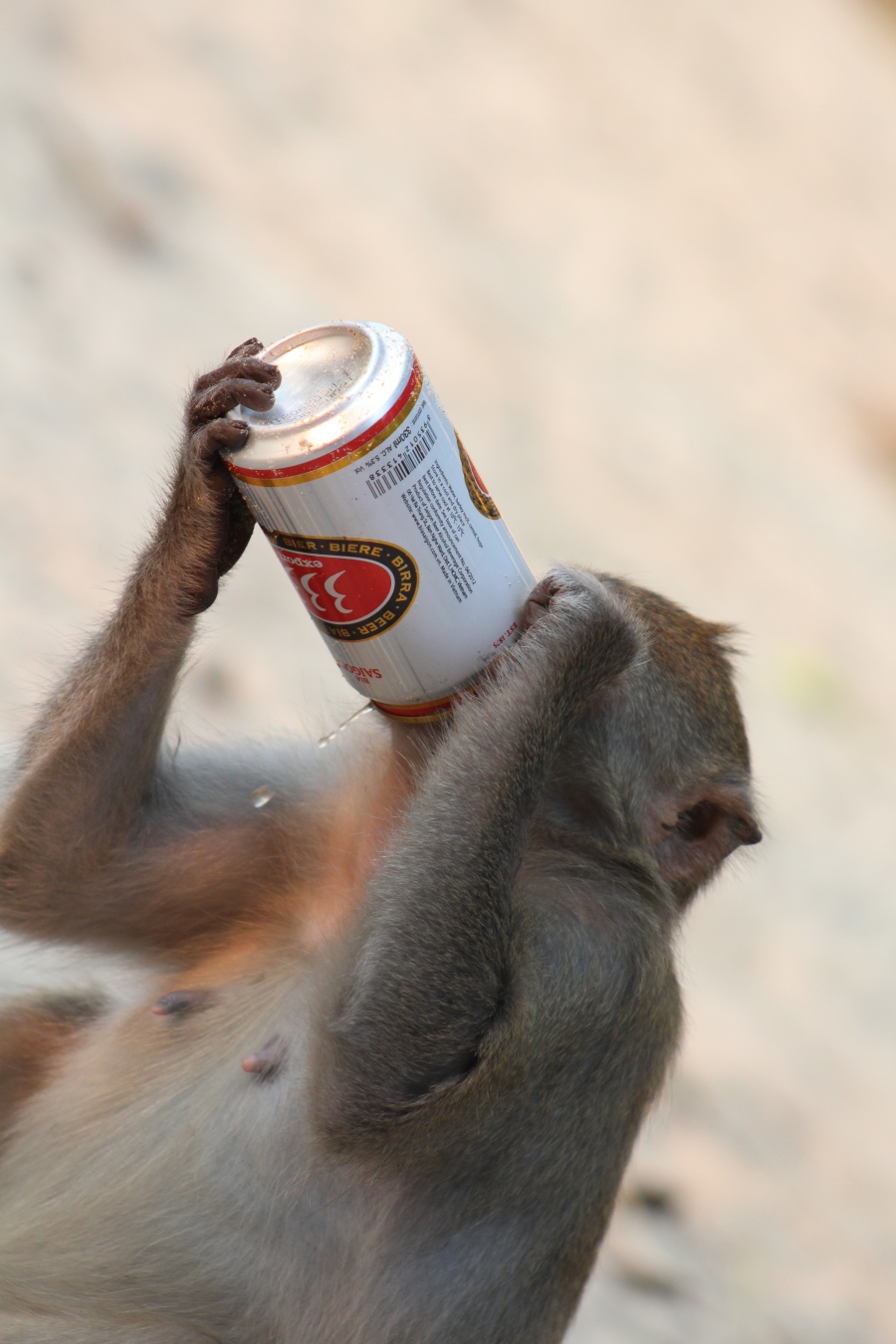
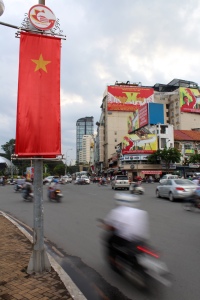
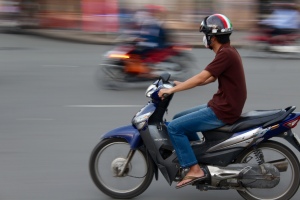
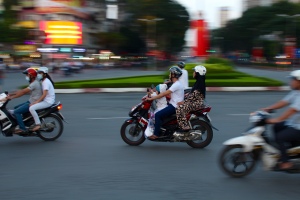




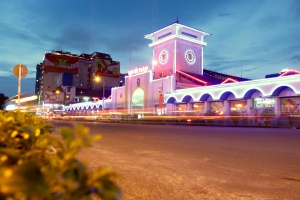

















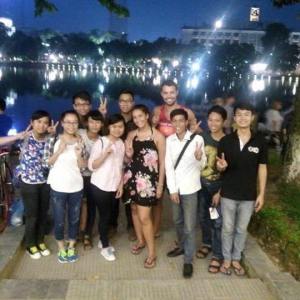


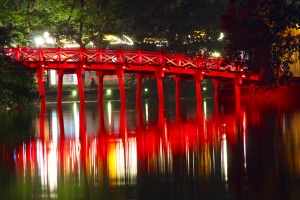














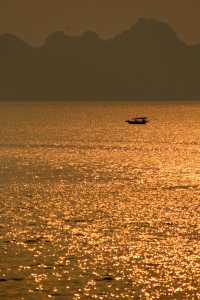
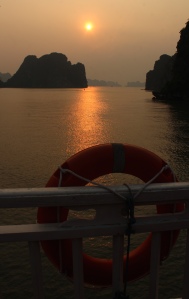

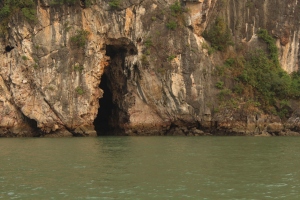
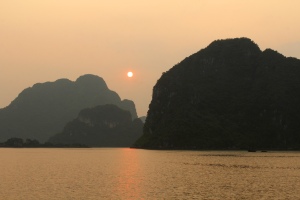
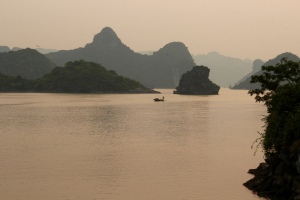
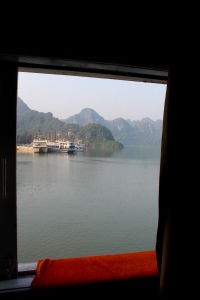
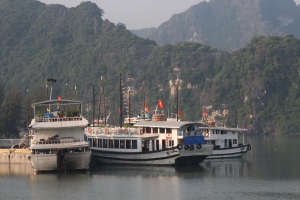














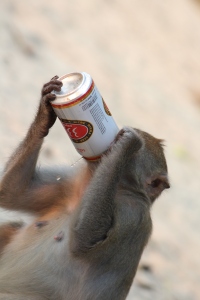
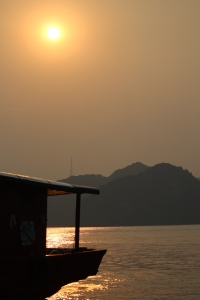
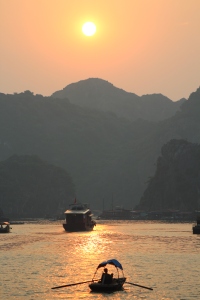
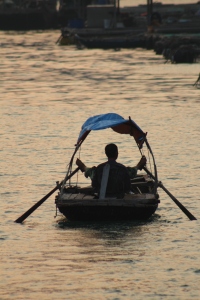
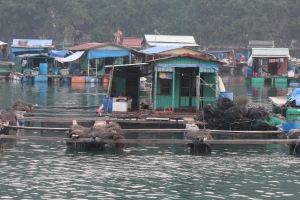
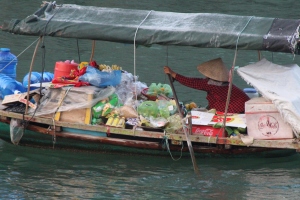
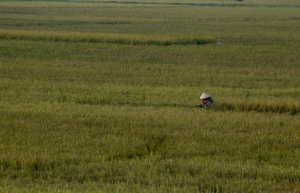
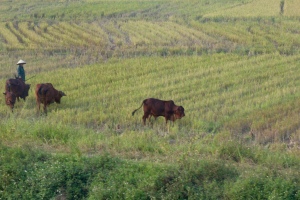
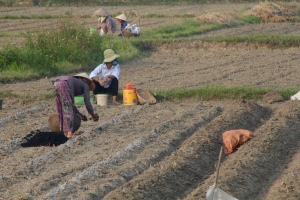
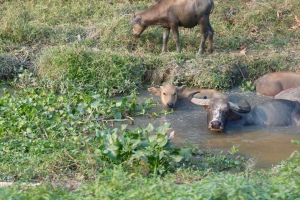
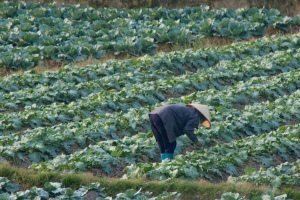
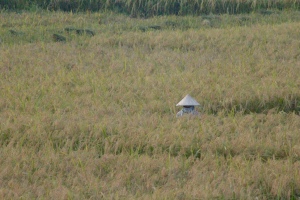
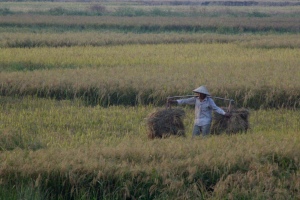
If I could offer two pieces of advice to tourists in Viet Nam; stay the hell away from monkeys and don’t get into the unlicensed taxis.
Other than that, have a great time.
LikeLiked by 1 person
Thanks for your comment. Wished I read it before stepping into the wrong taxi! We kept away from the monkeys so that was fine 🙂
LikeLike